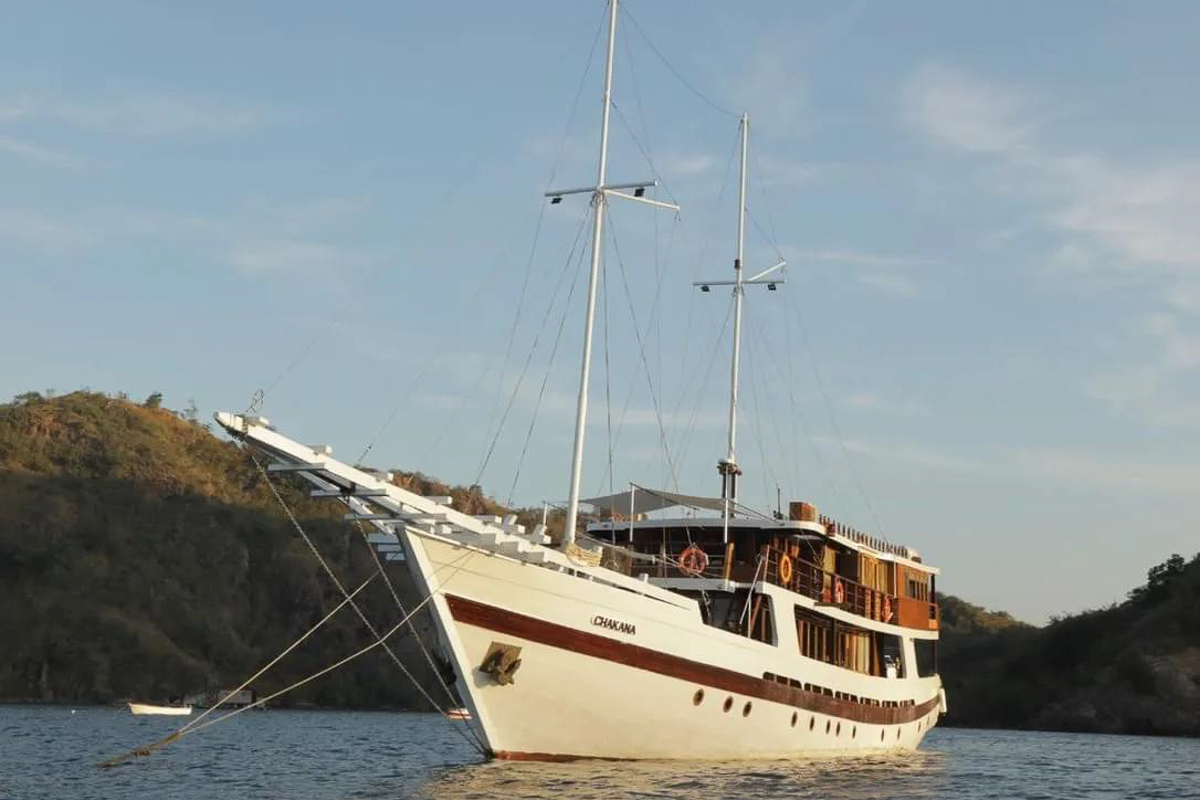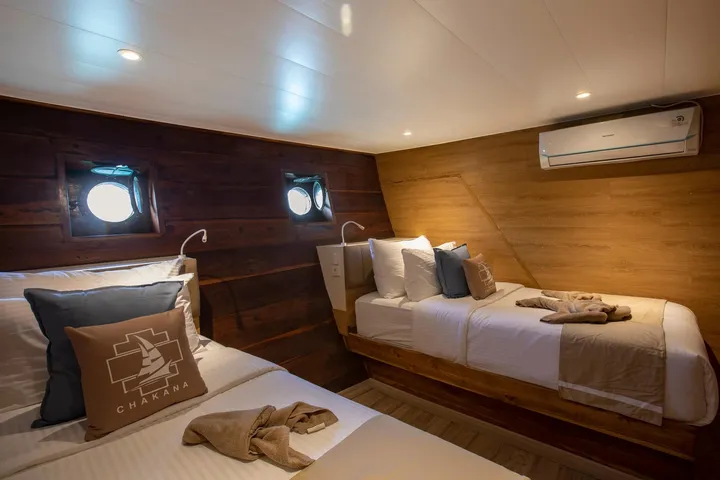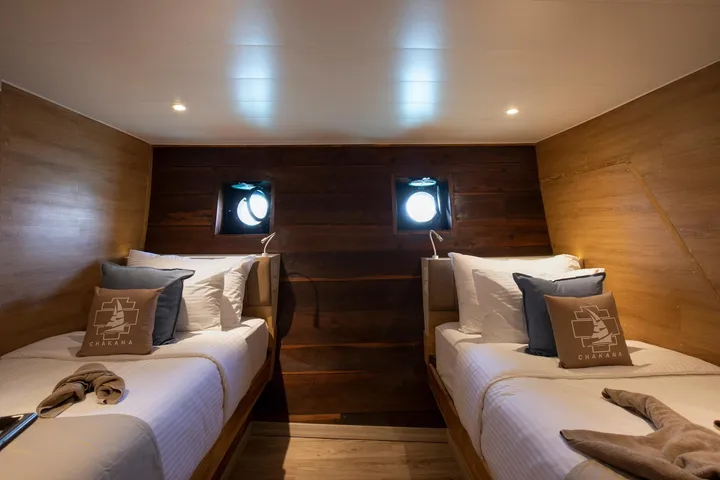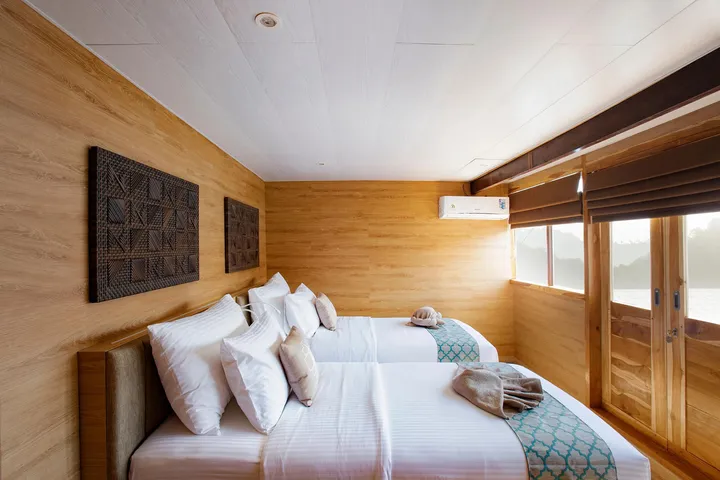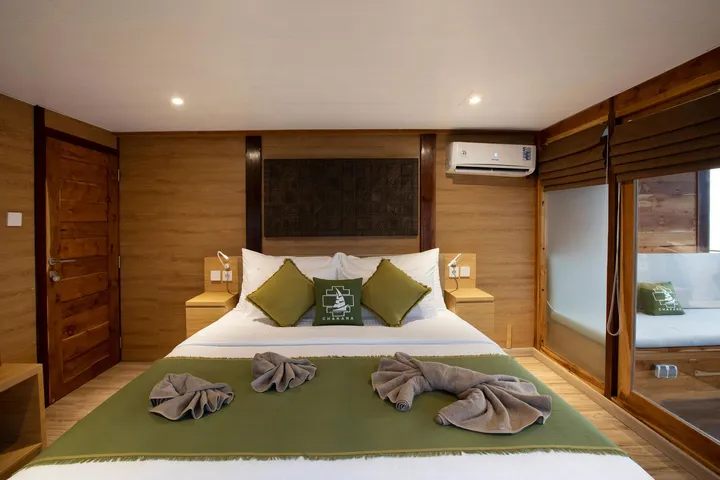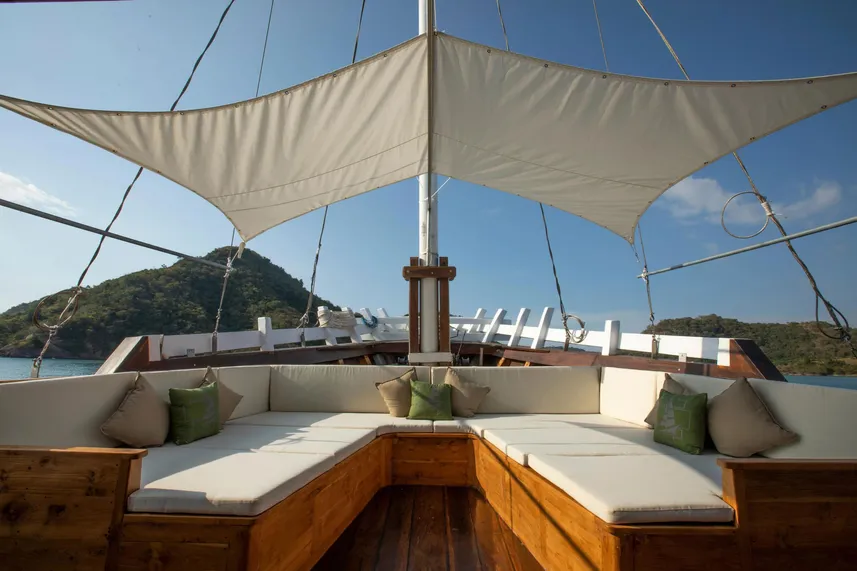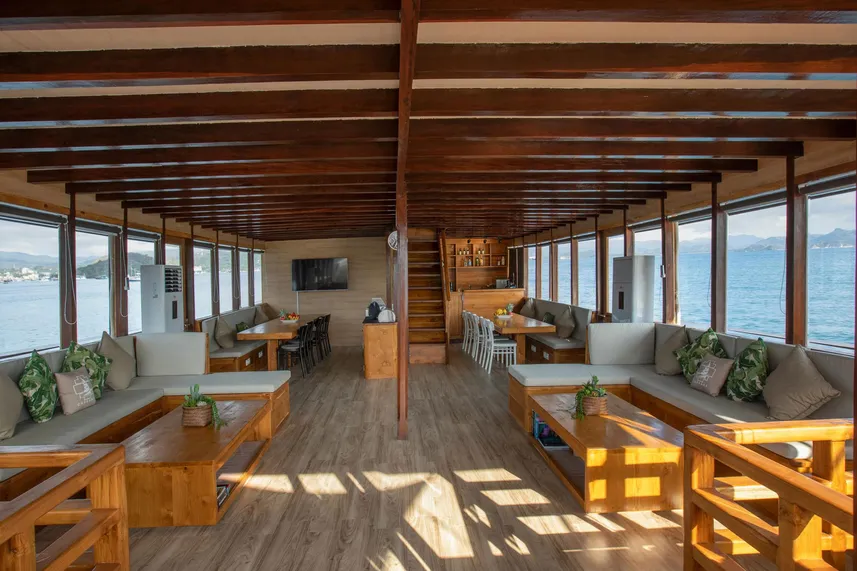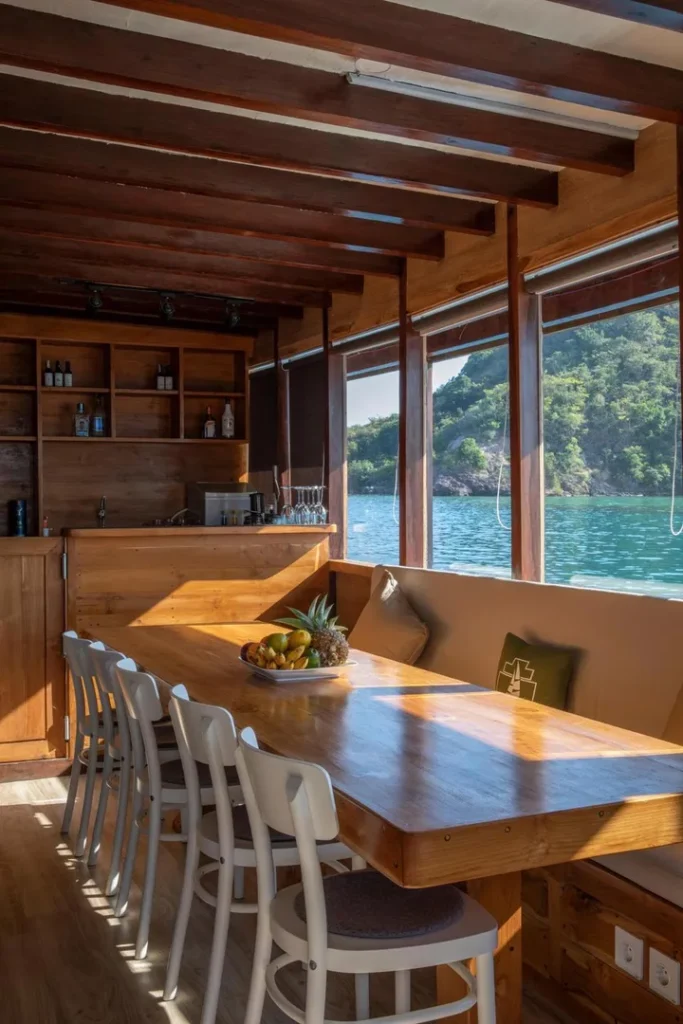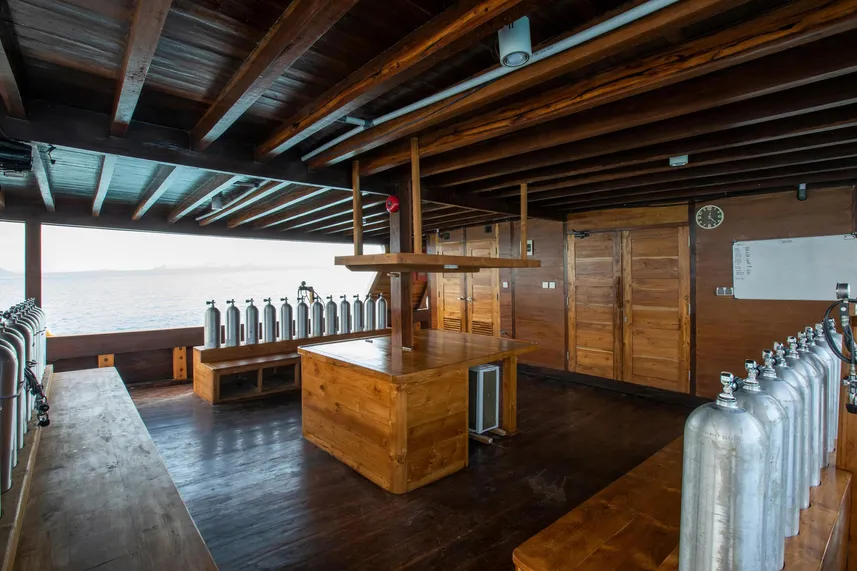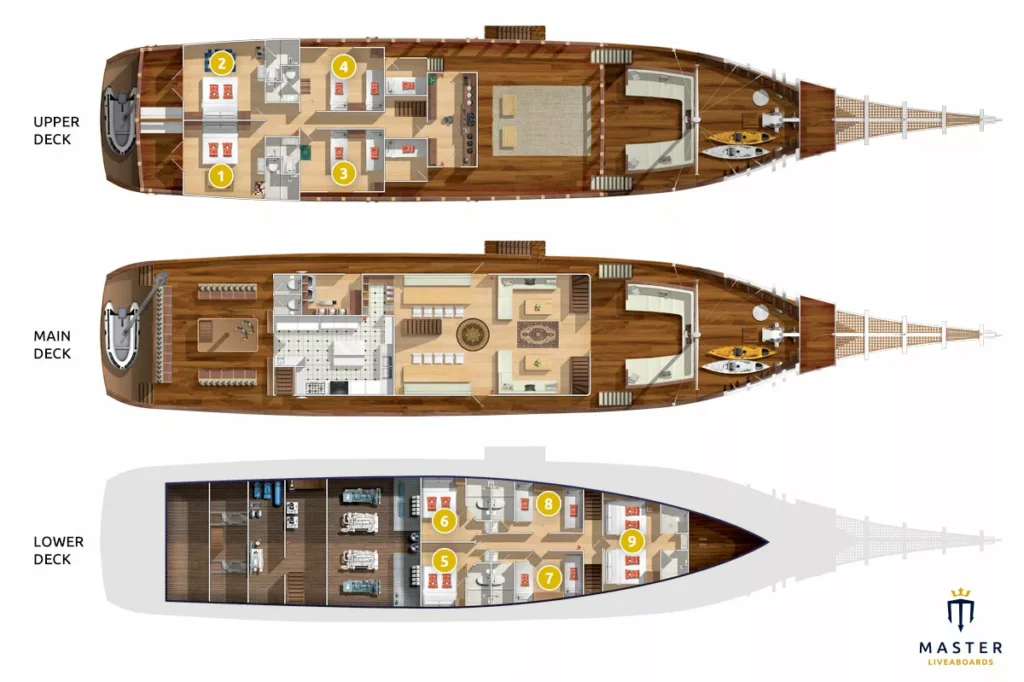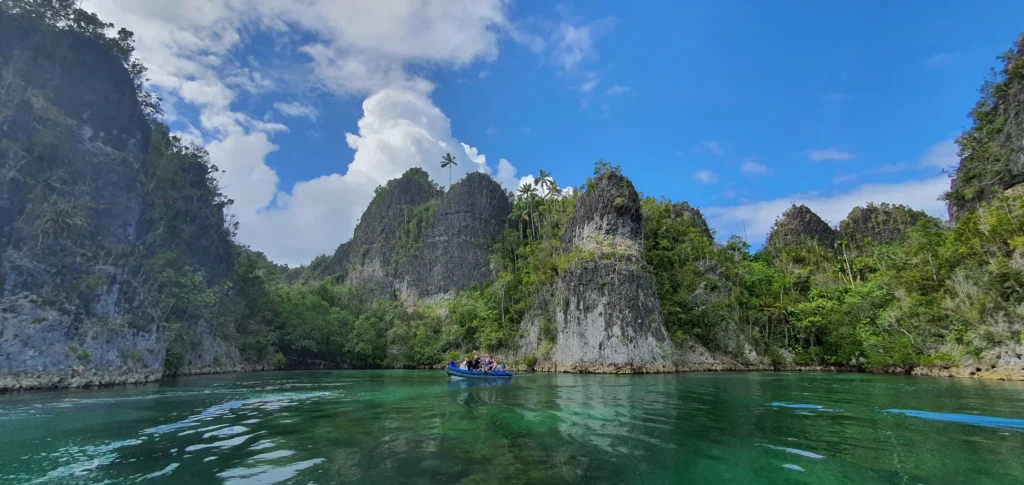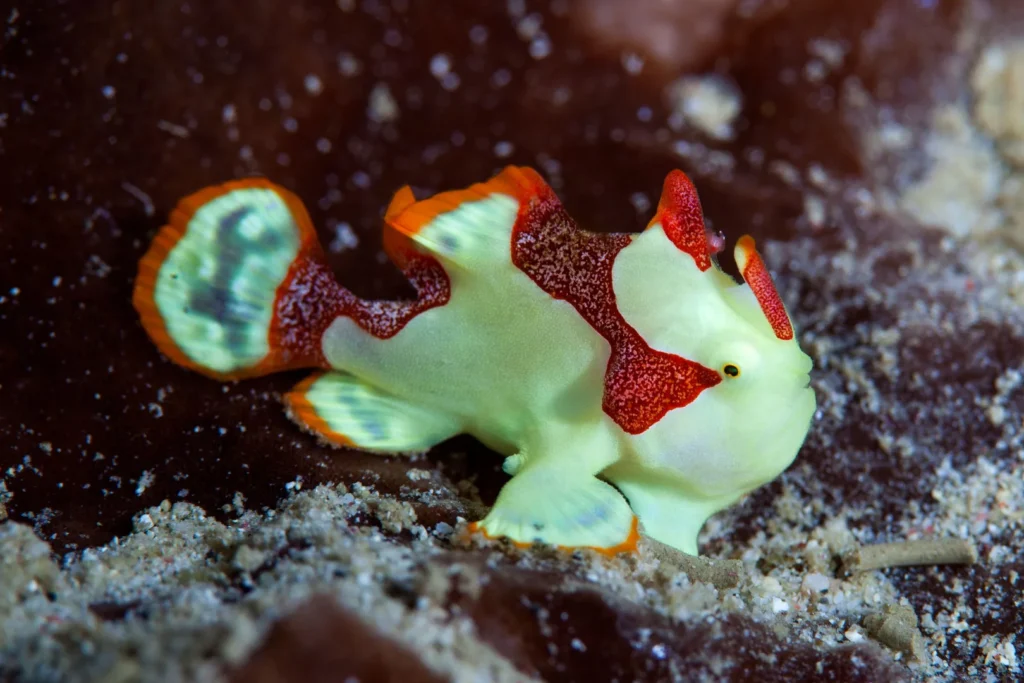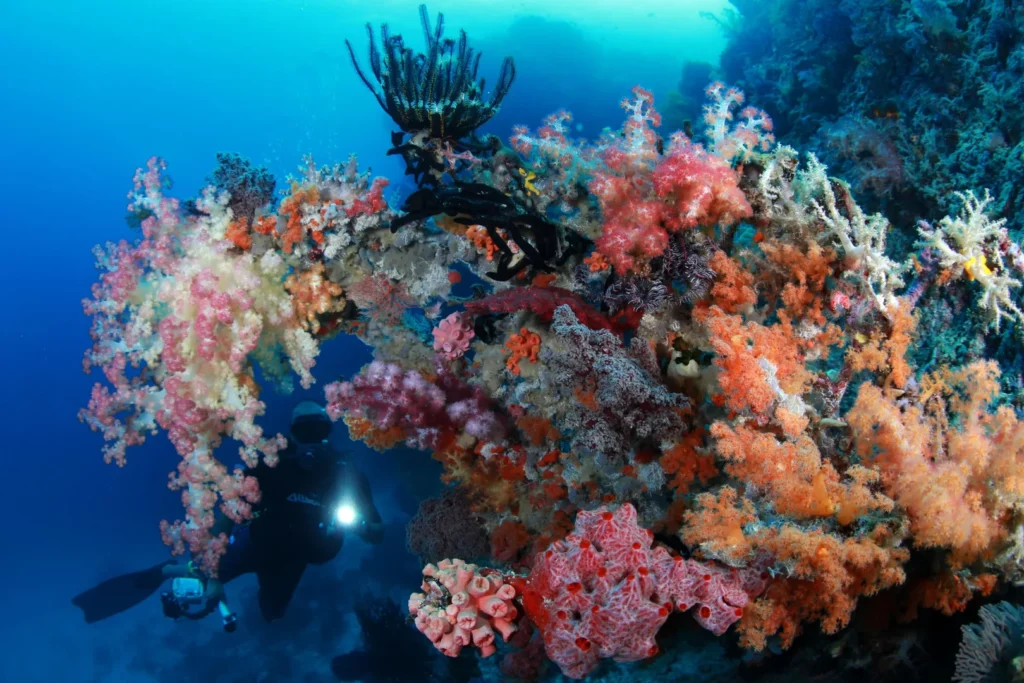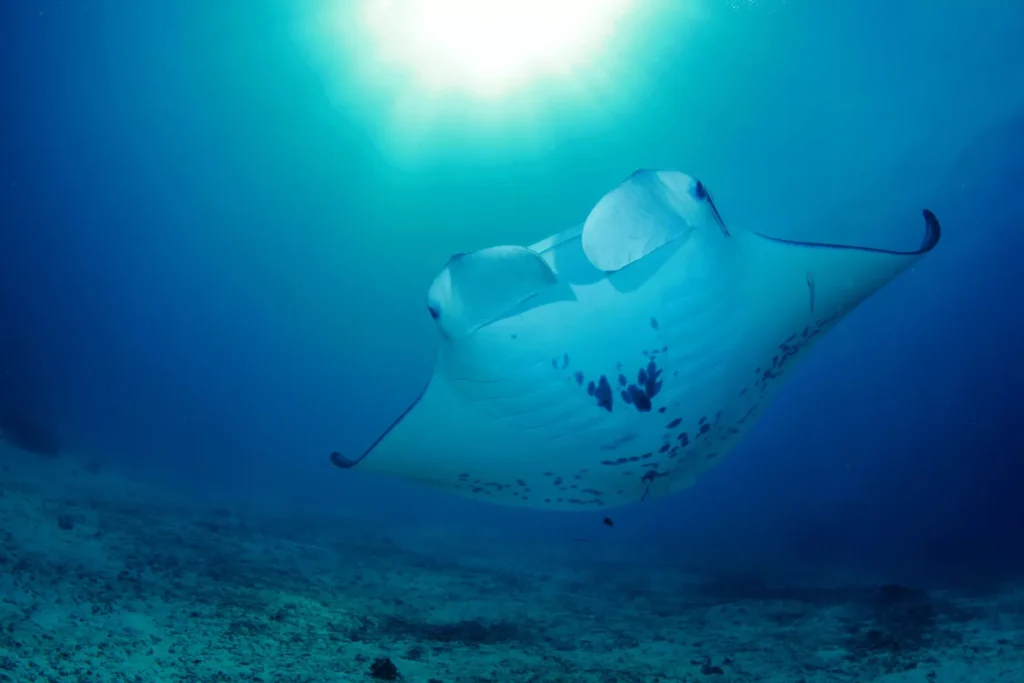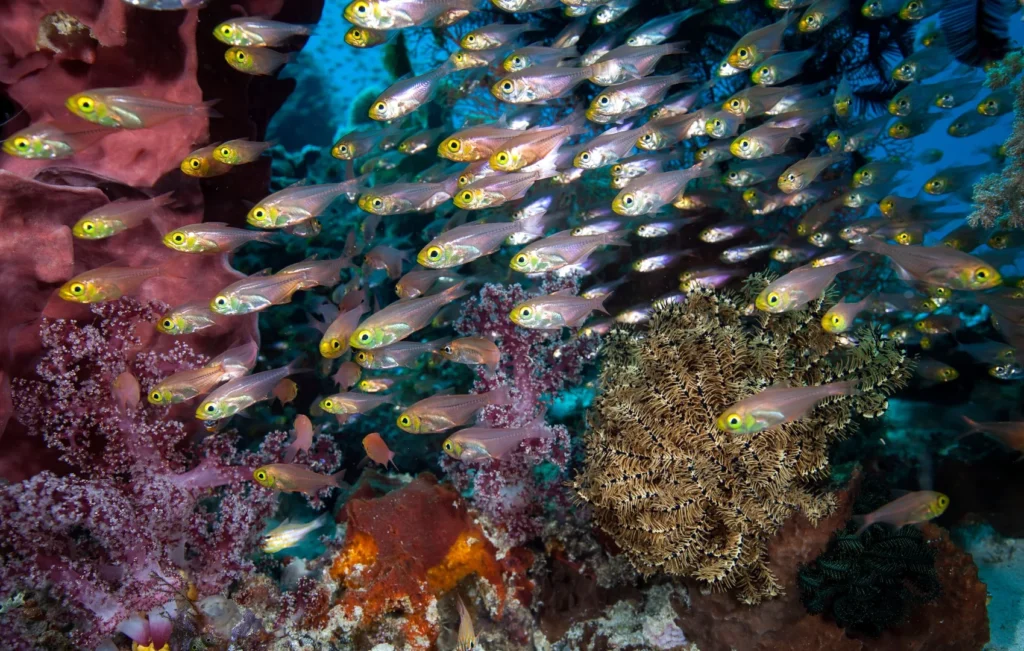Following breakfast on board, disembarkation is scheduled between 8:00 and 10:00.
*We kindly request that guests check their flight departure times to ensure that they leave a minimum of 24 hours between their final dive and their flight home.
Following is a sample of dive sites which we may visit during your time aboard Indo Master. The safety of our guests is paramount and we always do our best to offer diving at alternate locations, should we be unable to visit those sites listed below.
Fast drift dives and big fish schools characterise the sites in the Dampier Strait. Numerous dive sites are clustered together providing a variety of “Big Fish” dives with currents and more relaxed dives where smaller creatures can be found and photographed. Your dive team will check currents and choose sites based on the optimum conditions each day.
Manta Sandy - The two large bommies situated in the middle of a sandy bottom at just 18 metres are a world-renowned cleaning station which attracts many reef manta rays of a variety of shades and sizes, including all–black mantas, distinctive to Raja Ampat. Divers can simply rest on the bottom and watch the show.
The reef itself has many smaller creatures with dragonets and various pipefishes as well as Bumphead parrotfish and black-tip reef sharks. Therefore, in case the mantas are not
performing, there is still plenty to look at and discover
Cape Kri - One of the best-known sites in the Dampier Strait, the variety of reef fish is astounding. A world record setter with 374 species of fish seen during one dive, Scribbled filefish, Harlequin sweetlips, Bumphead parrotfish, Pinnate batfish, hawkfish and Napoleon wrasse are all commonly seen. In the blue, myriad Bignose unicornfish and Bluestreak fusiliers are closely watched by giant trevallies and dogtooth tuna, whilst black-tip reef sharks, pick handle barracuda, turtles and pipefish are all regularly spotted as well.
Blue Magic - A long finger-shaped reef sloping down at the points from 8 metres to 30 metres (26ft - 98ft) with hard and soft corals, sea fans and black coral bushes, where schools of jacks and barracuda hover close to the reef while grey reef sharks cruise in the blue and mantas sweep through the cleaning stations. For the keen-eyed, wobbegong sharks and pontohi pygmy seahorses add to the appeal and wonders of this magical dive site.
Sardine Reef - Swarms of fusiliers, snappers and sweetlips, schools of bump head parrotfish and banner fish, barracuda and trevally all make this site a very fishy dive. Rock mover wrasse, dragonets and jaw fish are amongst the smaller fish species seen here whilst white-tip and black-tip reef sharks can also be spotted.
Mike’s Point - As we approach the tiny limestone island known as Mike’s Point, eagles can often be seen resting in the treetops. Underwater, the site offers varied topography with one side full of overhangs and crevices whilst the other has “steps” dropping down to the deep with a field of whip corals adorning the slope. With the right current, this site is superb and the island can be circumnavigated in one dive seeing sweetlips, batfish, jacks, Spanish mackerel, grey reef sharks and wobbegong sharks.
Yangeffo and Penemu Islands
Located west of Gam these mushroom islands are surrounded by turquoise seas full of
pristine coral. These islands provide a range of dive sites for us to choose from, including:
Melissa’s Garden - This site is home to some of the best hard coral gardens in Raja Ampat. Featuring a shallow flat reef with beautiful blue-tipped staghorn corals inhabited by myriads of damselfish, trevally, black tip reef sharks and wobbegong sharks, along with orangutan crabs and spiny lobsters are common sightings here.
Mayhem - This dive spot is notorious for its strong currents, making for an exhilarating dive with lots of action. It is a superb site for larger fish sightings including Barracuda, Mackerel, Blue-fin trevally, Tuna, Napoleon wrasse and Bumphead parrotfish, as well as eagle rays and wobbegong sharks.
Citrus Ridge - A stunning reef named after the carpet-like orange, pink, yellow and green soft corals that cover the entire area. Gorgonian fans shelter pygmy seahorses, jawfish bob out of their ground holes, wobbegong sharks rest lazily amongst table corals and harlequin sweetlips can be found tucked into the many bommies that are dotted over the reef. The up-current side offers sensational pelagic encounters such as roaming grey and blacktip reef sharks, schooling jacks and a vortex of blackfin barracuda.
Named for its banana-like shape, Pisang Island is an oasis in the middle of the Halmahera Sea, surrounded by deep blue water. We will stop off at Bantu Anyer, Besar and Kecil, a steep rocky slope covered in a blanket of giant barrel sponges. Here you can make an exhilarating drift dive provided the current is right. Out in the blue, schooling jacks, blackfin barracuda and rainbow runners can be seen, while back in the shallows there is a hard coral plateau.
This is one of the northern Moluccca Islands in the Molucca Sea, located just southwest of the large island of Halmahera. There are two special dive spots to explore in this area:
Akiko’s Never-neverland - This is a truly unique dive site, riddled with diverse topography. It adorns a wall plunging to 40 metres, where spiny lobsters hide in the numerous cracks. Cruising along the wall are schooling jacks, blacktip reef sharks and hawksbill turtles. The shallow plateau is also densely covered with leather corals.
Tanjung Maragarando - An exciting dive for pelagic and schooling fish. With the right current, this dive brings large schools of jacks, blackfin barracuda, golden batfish, and fusiliers. From 30 metres, the slope is densely covered with bright yellow soft corals.
Located between Batjan & Halmahera Islands, strong currents nurture the dense soft corals
and Gorgonian fan gardens. Numerous protected bays offer interesting night dives and
opportunities to look for critters such as bobtail squid and epaulette sharks. Two of the sites we may visit are:
Proco - Sitting in the middle of the channel, this pinnacle extends to a plateau of around 25 metres. The area is densely covered with pastel, yellow, and orange soft corals, a wonderful array of colours contrasted by the schools of fusiliers and surgeonfish.
Batu Jabu - A massive submerged reef where you can drift along rocky slopes covered with hard and soft corals. Aggregations of unicorn fish, fusiliers, snappers, and surgeonfish abound. The shallows feature dense staghorn coral fields packed with shining anthias.
Guraici and Tamo-Tamo Islands
These islands will generally mark the point in the cruise where we cross the equator and so switch hemispheres. Guraici and Tamo-Tamo are nestled 31 miles west of Halmahera Island and 43 miles south of Ternate and Tidore.
Renne’s Rock - A colossal pinnacle, surrounded by extensive plateaus and large bommies. This is a great site to look for grey, whitetip and blacktip reef sharks as well as grazing bumphead parrotfish in the shallows.
Akejojaru - A wide shallow plateau decorated with a large spread of bommies. The reef drops 60 metres down a steep slope and a dramatic wall to a white sandy bottom which reflects light onto the vibrant soft corals. This is another great place to spot blacktip reef sharks, Napoleon wrasse, and bumphead parrotfish.
Tamo-Tamo Pinnacle - Here an explosion of marine life can be observed along a wall of colourful soft corals. Ribbon sweetlips are often seen hanging around the deeper parts of the wall, where grey reef sharks patrol. Dense shoals of fusiliers and surgeonfish, along with giant trevallies, are also common residents of this reef.
Makian Island is a 10 km wide (6 mile) volcano with a 1.5 km wide (1 mile) summit crater. Located off the west coast of Halmahera, south of Ternate Island, this is one of Indonesia’s most destructive volcanoes. We spend a full day muck diving around this fantastic diving spot where encrusting sponges completely cover underwater pillars where frogfishes, Honshu pipefishes and nudibranchs hide. The shallow grey volcanic sand plateau is home to a variety of critters waiting to be discovered, including ghost pipefishes, dragonets and diverse cephalopods, such as long-arm octopus, bobtail squid and colourful flatworms.
Rising midway between Halmahera and Sulawesi, in the very deep open Molucca Sea, the dive sites around Tifore are mostly plateaus with sheer walls and steep slopes plus great visibility in clear blue water.
A massive dive site, where we dive three times following the best entry points depending on the current. On top of a beautiful variety of corals, sponges and topographies, don’t forget to look into the blue for big schools of barracuda, jacks, and other surprises.
Welcome to the macro mecca of Lembeh, which is well known for the volcanic black sand,
home to many weird and wonderful critters. This is where "muck diving" all began. Enjoy the variety of rare critters; the good, the bad and the ugly, all playing hide and seek in their homes of the man-made debris along the seabed.
(*) itinerary description provided by the boat operator
Marine Life: At least 75 percent of all coral species can be found in Raja Ampat, divers can expect a range of topography from soft corals and sea fans, to hard corals, seagrass beds, mangroves, shallow reefs, deep drop-offs, caves, black sand, and white sand. Giant manta rays, sea turtles, sharks, cuttlefish, pipefish, various seahorse species, and massive schools of reef fish are the norm, plus the delightful wobbegong sharks and epaulet sharks inhabit these waters too.
The last dive will be on the penultimate day of the trip. Divers are recommended to wait for 24 hours before flying after the last dive.


